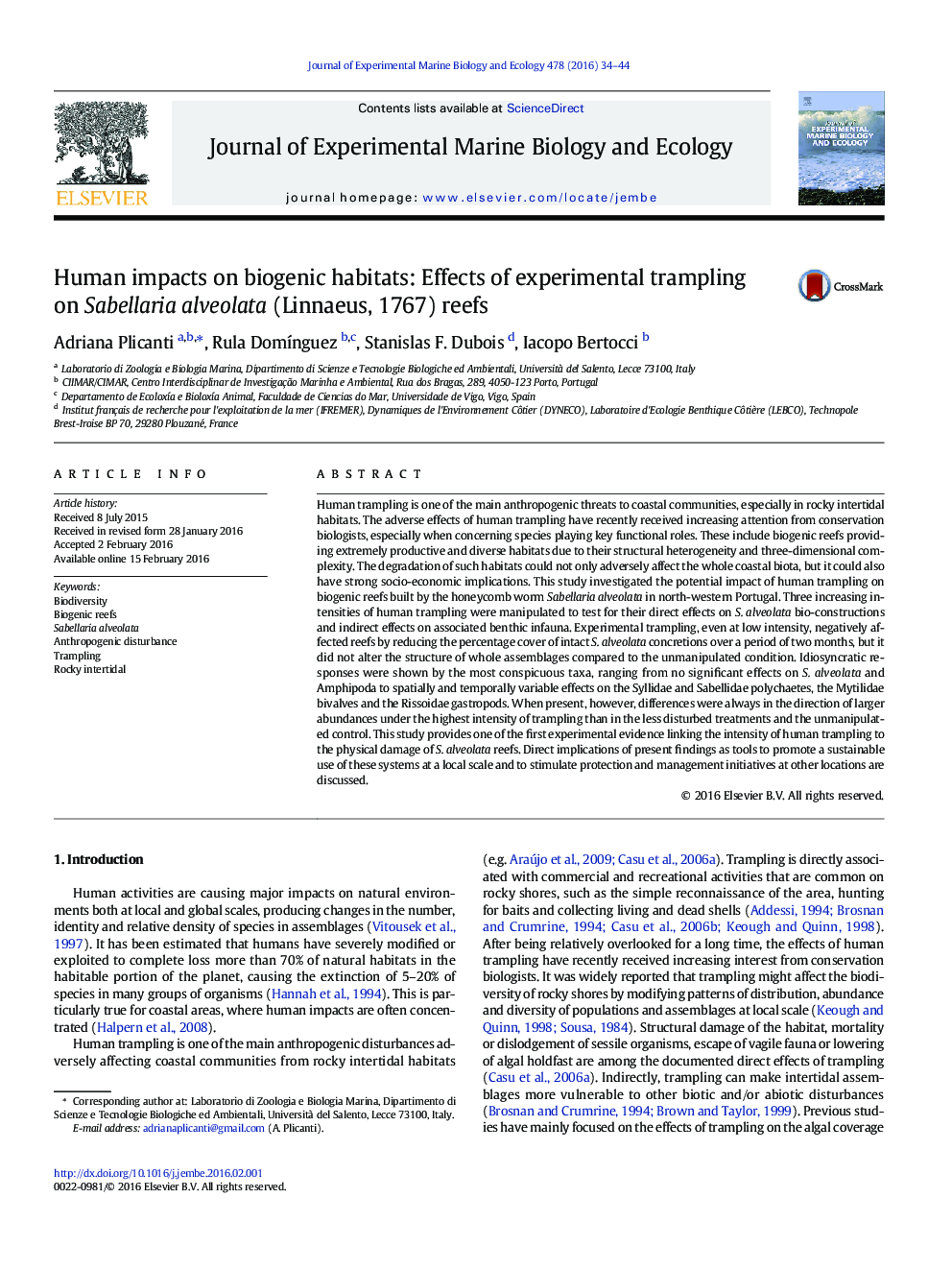| کد مقاله | کد نشریه | سال انتشار | مقاله انگلیسی | نسخه تمام متن |
|---|---|---|---|---|
| 6303773 | 1618397 | 2016 | 11 صفحه PDF | دانلود رایگان |
عنوان انگلیسی مقاله ISI
Human impacts on biogenic habitats: Effects of experimental trampling on Sabellaria alveolata (Linnaeus, 1767) reefs
دانلود مقاله + سفارش ترجمه
دانلود مقاله ISI انگلیسی
رایگان برای ایرانیان
کلمات کلیدی
موضوعات مرتبط
علوم زیستی و بیوفناوری
علوم کشاورزی و بیولوژیک
علوم آبزیان
پیش نمایش صفحه اول مقاله

چکیده انگلیسی
Human trampling is one of the main anthropogenic threats to coastal communities, especially in rocky intertidal habitats. The adverse effects of human trampling have recently received increasing attention from conservation biologists, especially when concerning species playing key functional roles. These include biogenic reefs providing extremely productive and diverse habitats due to their structural heterogeneity and three-dimensional complexity. The degradation of such habitats could not only adversely affect the whole coastal biota, but it could also have strong socio-economic implications. This study investigated the potential impact of human trampling on biogenic reefs built by the honeycomb worm Sabellaria alveolata in north-western Portugal. Three increasing intensities of human trampling were manipulated to test for their direct effects on S. alveolata bio-constructions and indirect effects on associated benthic infauna. Experimental trampling, even at low intensity, negatively affected reefs by reducing the percentage cover of intact S. alveolata concretions over a period of two months, but it did not alter the structure of whole assemblages compared to the unmanipulated condition. Idiosyncratic responses were shown by the most conspicuous taxa, ranging from no significant effects on S. alveolata and Amphipoda to spatially and temporally variable effects on the Syllidae and Sabellidae polychaetes, the Mytilidae bivalves and the Rissoidae gastropods. When present, however, differences were always in the direction of larger abundances under the highest intensity of trampling than in the less disturbed treatments and the unmanipulated control. This study provides one of the first experimental evidence linking the intensity of human trampling to the physical damage of S. alveolata reefs. Direct implications of present findings as tools to promote a sustainable use of these systems at a local scale and to stimulate protection and management initiatives at other locations are discussed.
ناشر
Database: Elsevier - ScienceDirect (ساینس دایرکت)
Journal: Journal of Experimental Marine Biology and Ecology - Volume 478, May 2016, Pages 34-44
Journal: Journal of Experimental Marine Biology and Ecology - Volume 478, May 2016, Pages 34-44
نویسندگان
Adriana Plicanti, Rula DomÃnguez, Stanislas F. Dubois, Iacopo Bertocci,